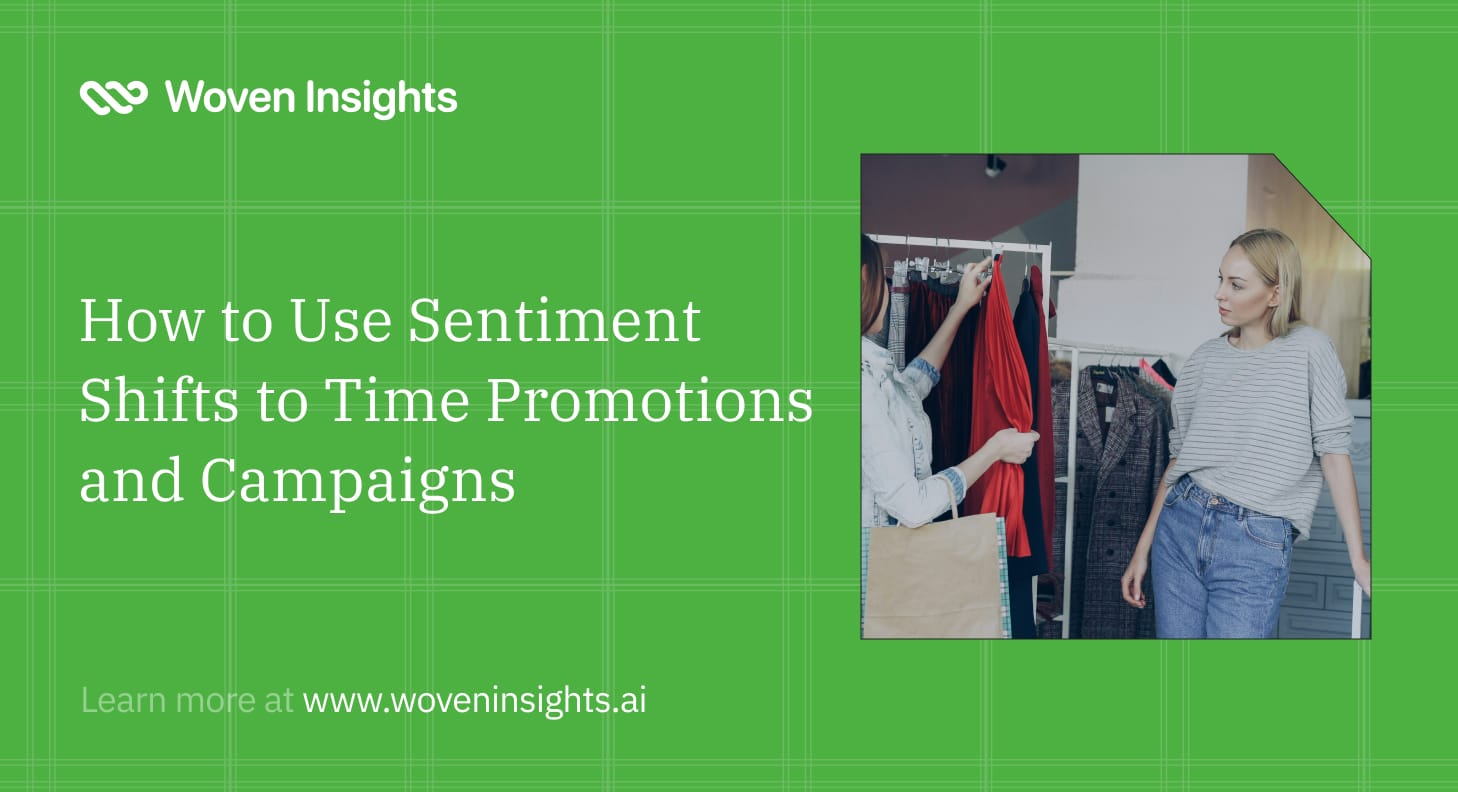How to Use Sentiment Shifts to Time Promotions and Campaigns
Fashion promotions succeed when timed with consumer mood. Learn how sentiment data helps brands align campaigns with customer demand.

In fashion, timing can be the difference between a successful campaign and wasted ad spend. While many brands still rely on sales peaks or seasonal calendars, the most effective marketers are now looking at sentiment data to decide when to launch.
According to Deloitte’s consumer insights study, brands that align promotions with shifts in customer sentiment see up to 20% higher campaign engagement. This makes sentiment analysis a crucial tool for timing fashion promotions.
Why Sentiment Shifts Matter for Campaign Timing
- Mood as a Market Signal: Positive sentiment around certain categories (e.g., summer dresses in spring) signals readiness for campaigns.
- Early Warning System: A drop in sentiment for an overhyped trend signals the need to pivot discounts or messaging.
- Category Sensitivity: Some products are more mood-driven think occasionwear vs basics.
How to Apply Sentiment Data
- Track review language: Are customers describing products as “perfect for summer” or “too heavy”?
- Monitor social chatter: Sudden spikes in excitement or criticism highlight campaign opportunities.
- Align creative direction: Campaign visuals and tone should match the mood (playful, aspirational, or value-focused).
Example in Action
ASOS monitored customer feedback about seasonal dresses and timed their promotions when positive sentiment spiked in early spring. The result was higher sell-through without heavy discounting.
Conclusion
Promotions are about more than timing the calendar, they’re about timing the consumer mood. By using sentiment data, brands can align promotions with when shoppers are most receptive, driving stronger ROI and brand trust.
About Woveninsights
Woveninsights is a comprehensive market analytics solution that provides fashion brands with real-time access to retail market and consumer insights, sourced from over 70 million real shoppers and 20 million analyzed fashion products. Our platform helps brands track market trends, assess competitor performance, and refine product strategies with precision.
Woveninsights provides you with all the actionable data you need to create fashion products that are truly market-ready and consumer-aligned.
Click on the Book a demo button below to get started today.

